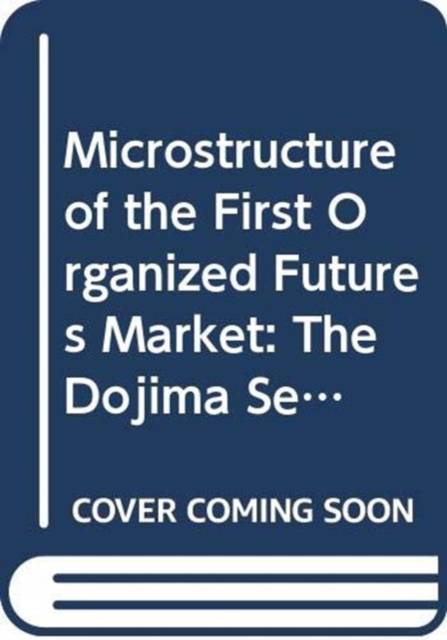
- Afhalen na 1 uur in een winkel met voorraad
- Gratis thuislevering in België vanaf € 30
- Ruim aanbod met 7 miljoen producten
- Afhalen na 1 uur in een winkel met voorraad
- Gratis thuislevering in België vanaf € 30
- Ruim aanbod met 7 miljoen producten
Microstructure of the First Organized Futures Market
The Dojima Security Exchange from 1730 to 1869
Yasuo Takatsuki, Takashi KamihigashiOmschrijving
This book is the first comprehensive account of the rules and practices─the microstructure─of the Dojima Security Exchange (DSE), the world's first futures market. Despite worldwide interest in the DSE and its relevance to modern financial markets, it is only briefly touched upon as the earliest example of a futures market in most of the existing literature in English. Until the publication of this book, there has been no comprehensive account in English of the rules and practices of the DSE.
The DSE emerged in Osaka, Japan, around the turn of the eighteenth century. In Tokugawa Japan (1603-1867), the shogunate and local lords levied taxes in rice and exchanged rice for currency in rice markets to finance their expenditures. Osaka had the biggest rice market in Japan throughout the Tokugawa period, and most local lords stored rice in their own warehouses in Osaka, selling rice at auctions. Successful bidders received "rice certificates" instead of rice itself, and each rice certificate could be exchanged for a pre-specified quantity of rice any time before its expiration at the issuer's warehouse. These certificates were actively traded in the DSE.
The spot market in the DSE was the market for exchanging rice certificates. In turn, the futures market was the market for the trading of nominal rice derived from one of the representative rice certificates among about 30 brands. There is no physical delivery of rice in the spot market and there is no physical delivery of rice or rice certificate in the futures market--even on the maturity date. All the futures trades at the DSE should be settled by simply paying or receiving the payoff defined as the difference in price between the time of selling (buying) and buying back (selling back). The futures trade was called 'Cho-Ai-Mai', which literally means 'the rice trades on the book', and implies that there is no physical delivery of rice or rice certificate.
Specificaties
Betrokkenen
- Auteur(s):
- Uitgeverij:
Inhoud
- Aantal bladzijden:
- 250
- Taal:
- Engels
- Reeks:
- Reeksnummer:
- nr. 51
Eigenschappen
- Productcode (EAN):
- 9789812878199
- Verschijningsdatum:
- 11/09/2027
- Uitvoering:
- Hardcover
- Formaat:
- Genaaid
- Afmetingen:
- 155 mm x 235 mm

Alleen bij Standaard Boekhandel
Beoordelingen
We publiceren alleen reviews die voldoen aan de voorwaarden voor reviews. Bekijk onze voorwaarden voor reviews.








